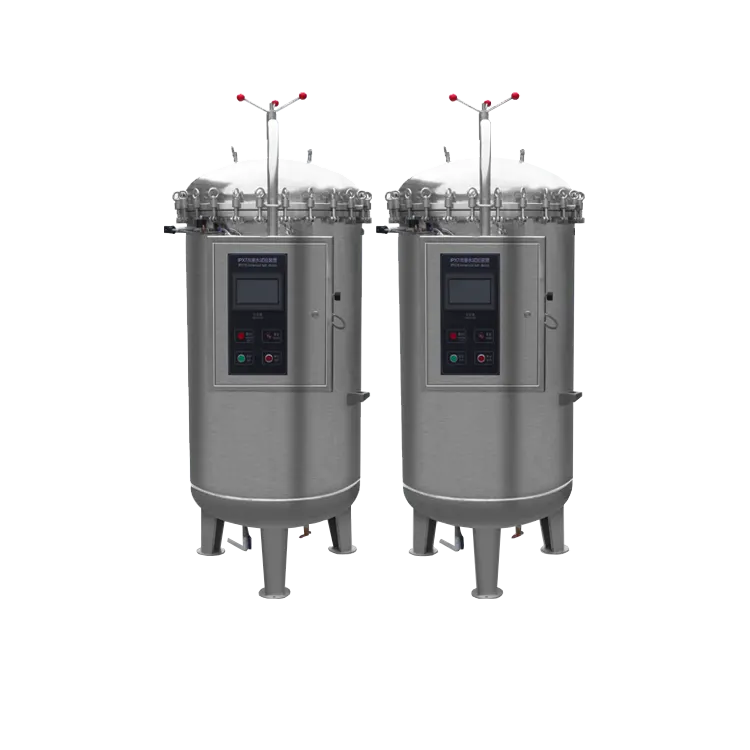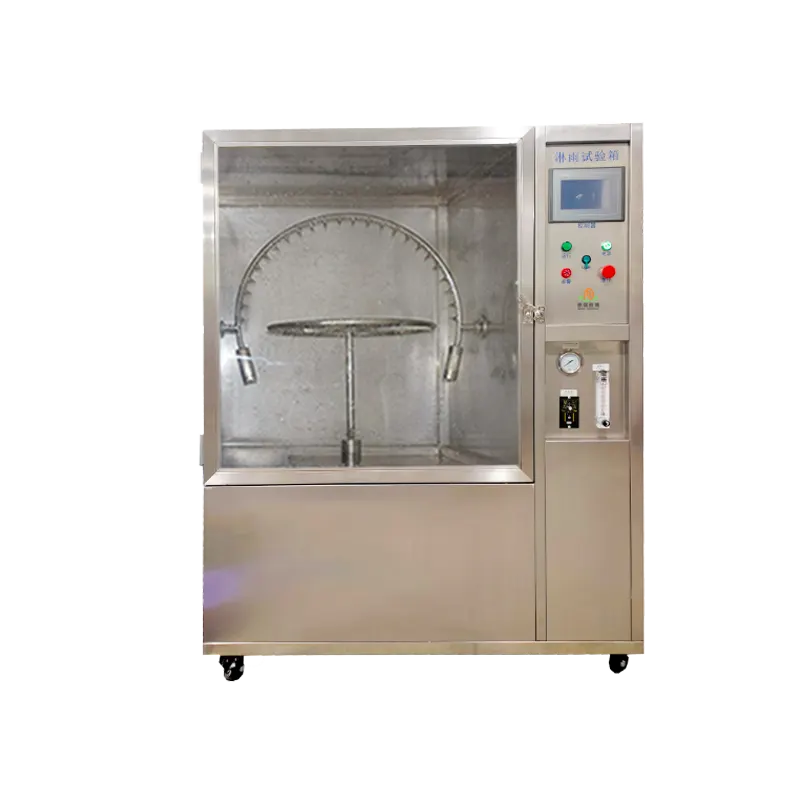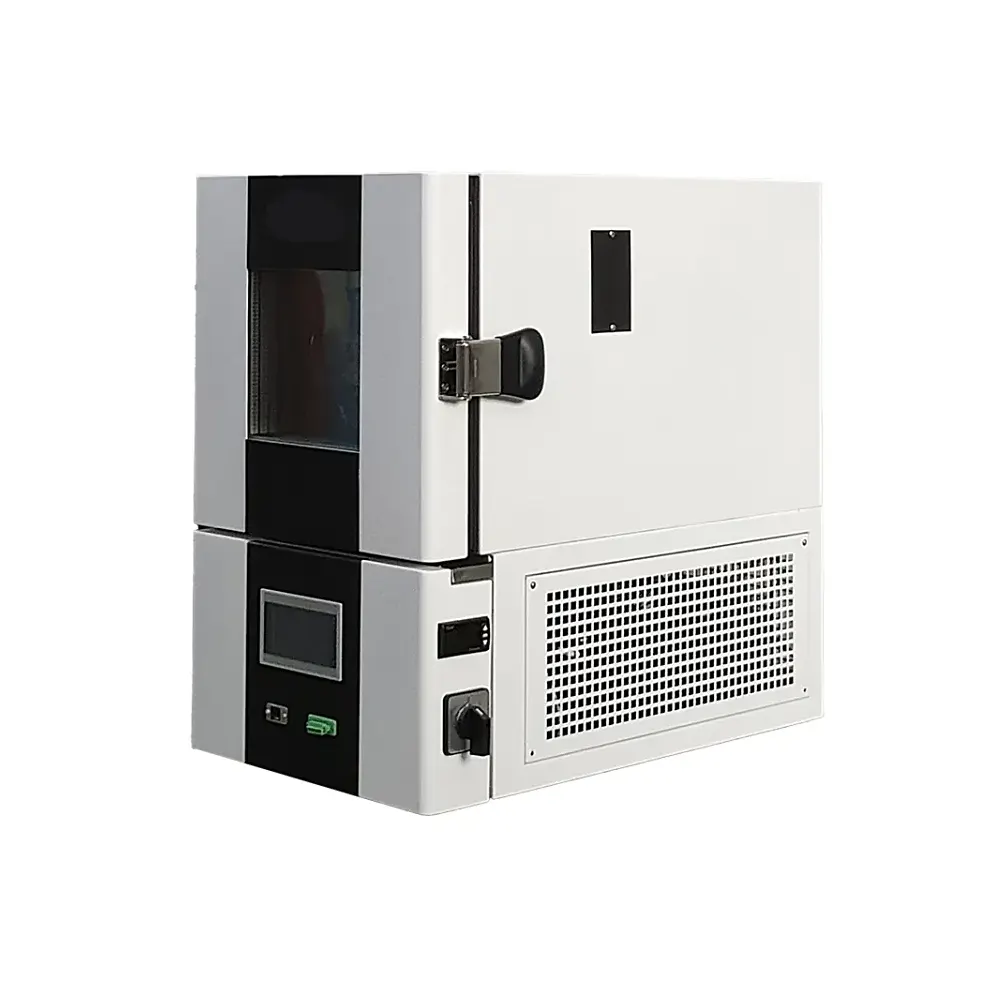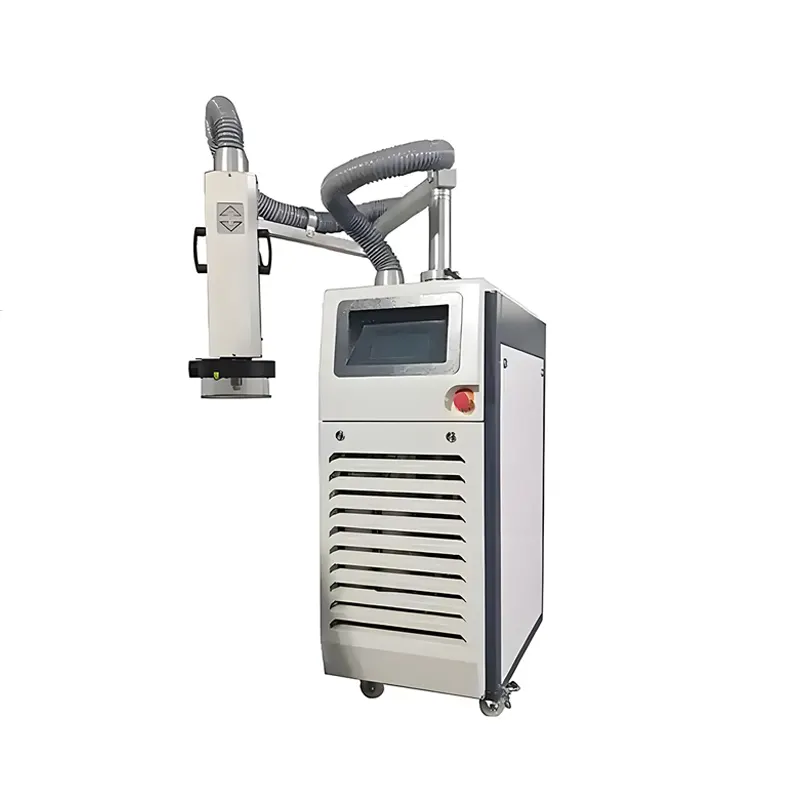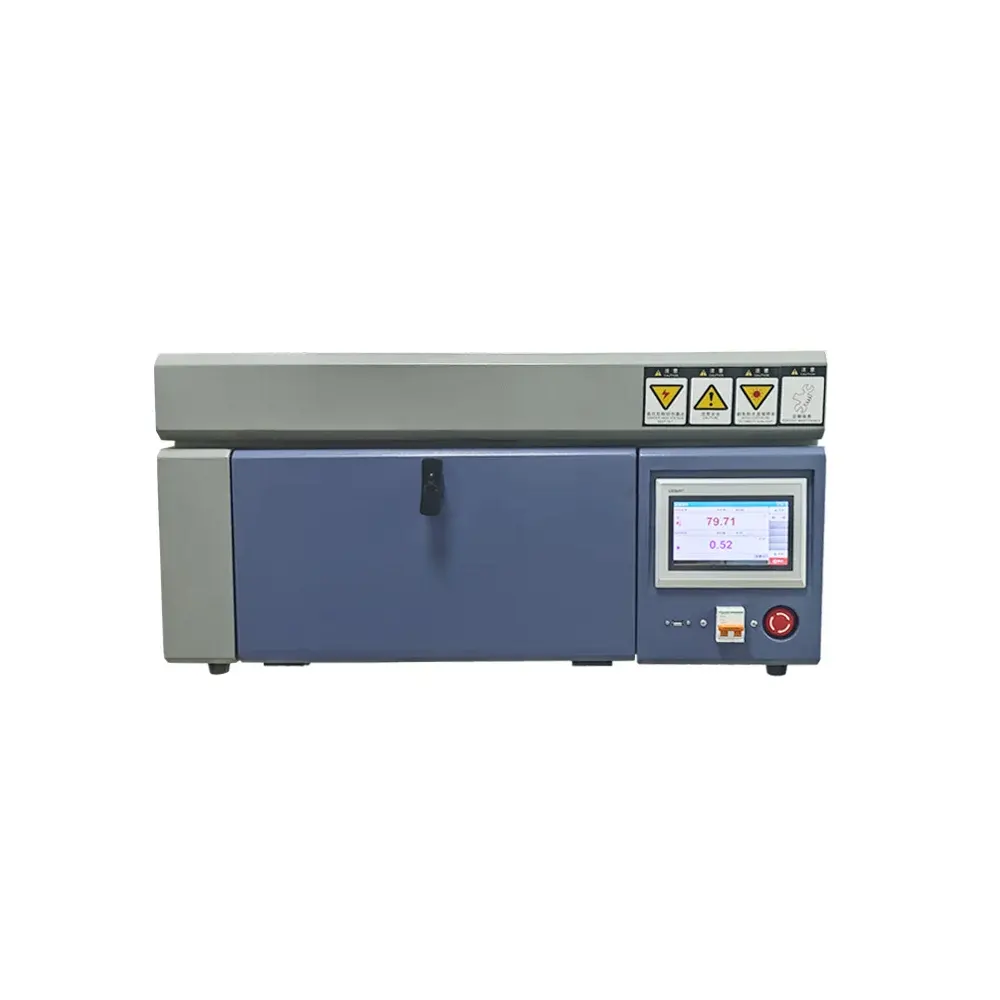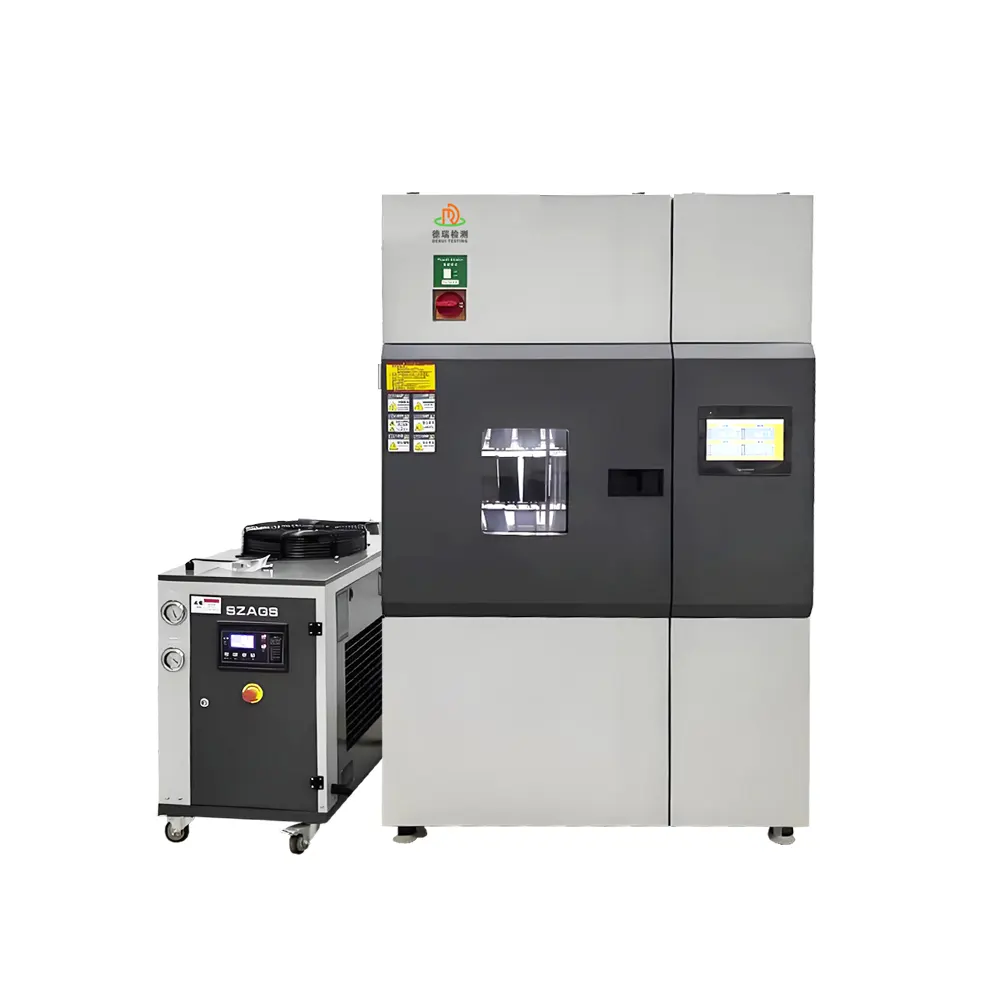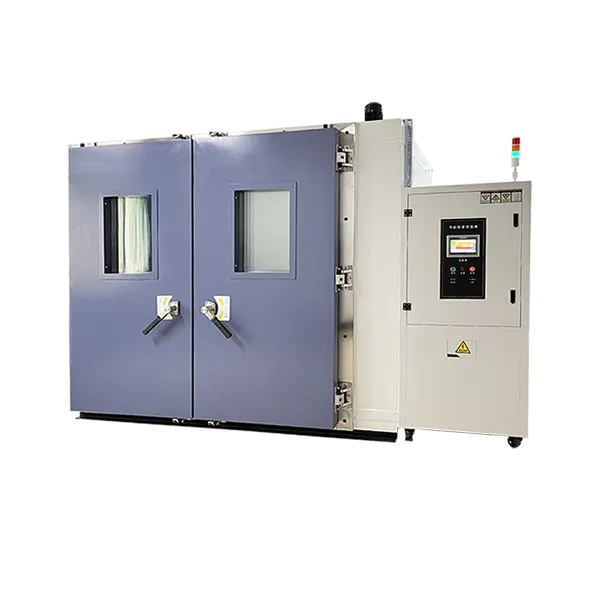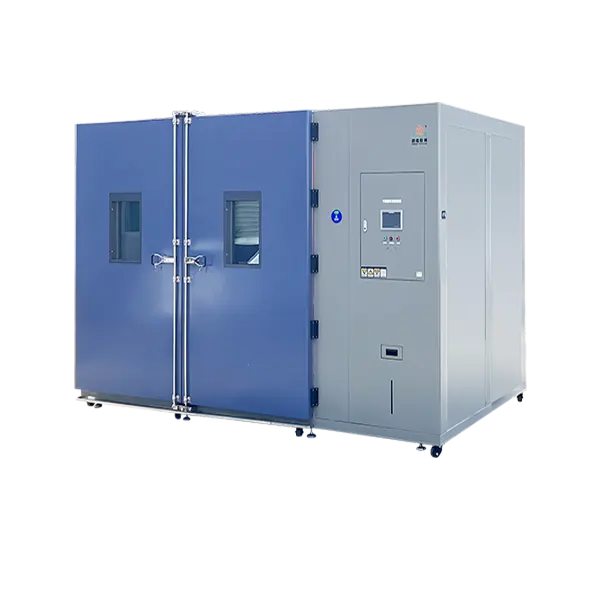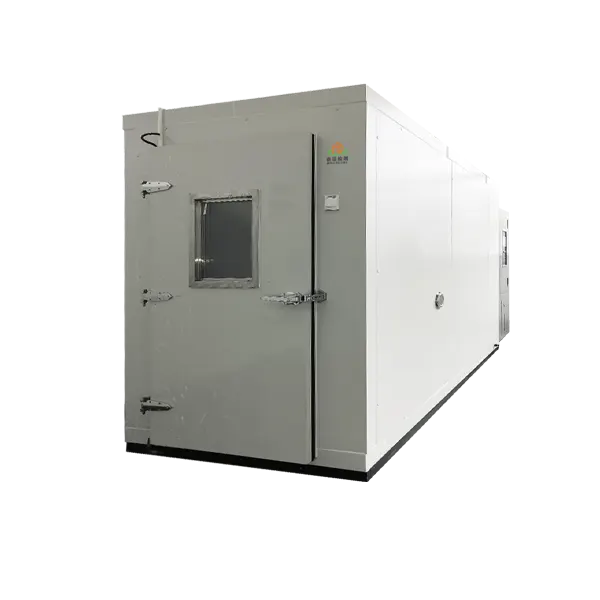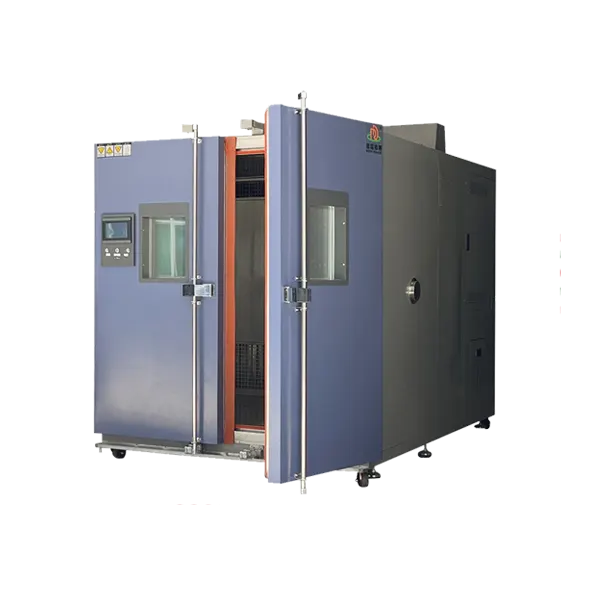Explore how Solar Panel Large Walk-in Chambers can revolutionize energy efficiency and sustainability in your projects.
Solar Panel Large Walk-in Chambers promote energy efficiency and environmental sustainability. These state-of-the-art chambers are designed for optimal solar energy absorption, providing controlled environments for research and testing purposes. From advanced temperature management to space optimization, these chambers are tailored to meet various application needs. Discover the top features that make our Solar Panel Large Walk-in Chambers ideal for your energy solutions.
Solar and Photovoltaic Testing Chamber Solutions by Dreiss: Meeting Industry Standards for Component Reliability
Derui specializes in the design and manufacture of environmental and photovoltaic (PV) testing chambers engineered to evaluate the performance of solar products and components under simulated sunlight, UV exposure, and extreme temperature conditions. Our testing solutions are built to comply with key international standards, including IEC 61730, IEC 61215, IEC 61464, as well as UL and ASTM methodologies for thermal cycling, damp heat, and humidity-freeze testing.
Key Testing Capabilities
1. Thermal Cycling Test (IEC 61215:2005 Compliance)
This test assesses a PV module’s ability to withstand thermal stress by cycling between 85°C and -40°C at an accelerated rate. The standard requires 50 or 200 cycles, depending on certification requirements. Our chambers ensure precise temperature control and rapid transitions to simulate real-world stress conditions.
2. Damp Heat Test (Humidity Exposure)
Designed to evaluate long-term exposure to high humidity and elevated temperatures, this test runs for 1,000 continuous hours at 85°C ± 2°C and 85% relative humidity. The test helps identify potential degradation in encapsulants, seals, and internal components due to moisture ingress.
3. Humidity-Freeze Test (IEC 61215 Compliance)
This test determines a module’s resistance to thermal shock after prolonged humidity exposure. It involves 10 cycles of:
- 85°C and 85% RH (high humidity)
- Followed by rapid cooling to -40°C
This simulates extreme weather transitions, ensuring the module maintains structural integrity.
Customized Testing Chambers for Solar Panels
Given the varying dimensions of solar panels, Derui offers custom-sized environmental test chambers to accommodate small, medium, and large modules. Our chambers are constructed with imported components, stainless steel interiors (precision-cut via CNC and laser systems), and digital touch controls for:
- Temperature and humidity programming
- Rate control and dwell time settings
- Built-in data logging for compliance reporting
The chambers feature high-performance refrigeration systems from leading brands, ensuring stable low-temperature operation without frequent maintenance. A stainless steel mounting rack system is included to securely position PV modules during testing.
Global Supply with Technical Support
Derui provides factory-direct pricing for solar panel testing chambers, along with installation, commissioning, and after-sales service. Our solutions are trusted by manufacturers and testing labs requiring reliable, standards-compliant equipment for PV module validation.
For more details on our environmental testing solutions, contact us to discuss your specific requirements.
High-Capacity PV Testing Chambers | Precision Climate Simulation for Solar Module Validation
Dreiss’ advanced solar panel testing chambers are engineered to deliver unmatched performance, flexibility, and reliability for photovoltaic (PV) module testing. Designed to meet rigorous industry standards—including IEC 61215, IEC 61730, and UL/ASTM—our chambers ensure precise environmental simulation for thermal cycling, damp heat, and humidity-freeze testing.
Key Product Features
✅ Spacious Test Chamber Design
- Wide chamber dimensions accommodate multiple small PV modules for high-volume testing efficiency.
- Compact external footprint yet large internal volume, making it ideal for large-format solar panels without compromising lab space.
✅ Premium Cooling System for Superior Performance
- Imported high-efficiency refrigeration system ensures:
- Precise temperature & humidity control (±0.5°C / ±1.5% RH) for accurate, repeatable test results.
- Faster heating/cooling rates to reduce test cycle times.
- Up to 40% energy savings compared to conventional systems.
✅ Smart, Remote-Accessible Control via Haida® Interface
- Intuitive Haida® user interface allows operators to:
- Program, monitor, and adjust test parameters in real time.
- Access data logs remotely for seamless compliance reporting.
- Save custom test profiles for consistent, reproducible experiments.
✅ Durable, Low-Maintenance Construction
- Stainless steel interior (precision-fabricated via CNC & laser cutting) for corrosion resistance and easy cleaning.
- Heavy-duty stainless steel mounting racks securely hold PV modules during testing.
- Imported components ensure long-term reliability with minimal downtime.
Why Choose Dreiss Testing Chambers?
- Factory-direct pricing for cost-effective, high-performance solutions.
- Global installation & technical support to ensure seamless operation.
- Customizable chamber sizes to fit small, medium, or large PV modules.
Ideal for:
✔ Solar module manufacturers
✔ PV testing laboratories
✔ R&D facilities validating solar panel durability
Compliance & Certifications:
- Fully compliant with:
- IEC 61215 (Thermal cycling, Damp heat, Humidity-freeze)
- IEC 61730 (Safety qualification)
- UL 1703 / ASTM E1038 standards
Why PV Series Stands Out:
- Versatile testing capacity - From small cells to full-size panels
- Faster test cycles reduce time-to-results
- Energy-efficient operation lowers operational costs
- Remote monitoring enhances workflow efficiency
- Proven reliability with imported components
Key Selection Points
1、Performance Parameter Matching
Ensure that the temperature range, humidity control, light intensity and other parameters of the test chamber can meet the actual testing requirements. For example, solar panels need to simulate complex environmental conditions such as high and low temperatures, humidity and light cycles, and the performance parameters of the equipment must cover these ranges.
2、Structural design rationality.
Is the internal space of the test chamber large enough and convenient for personnel operation and installation of test equipment?
Is the material of the box body corrosion-resistant and does it have good insulation performance, such as commonly used 304 stainless steel with a polyurethane insulation layer?
Does it have good sealing performance to avoid interference from the external environment?
3、Stability of the control system
Does the control system support precise temperature and humidity control? Does it have intelligent functions such as automatic adjustment and data recording? Is it equipped with a touch screen or PLC controller? Is the operation interface intuitive and easy to use?
4、Safety and environmental protection.
Does the equipment have safety protection functions, such as overcurrent protection, leakage protection, and emergency alarm?
Does it use environmentally friendly refrigerants and materials to avoid environmental pollution?
5、Supplier and technical support
Choose suppliers with a good reputation and rich experience to ensure the quality of the equipment and after-sales service.
Whether the supplier provides technical support and training services for subsequent use and maintenance.
Precautions
1、Equipment installation and commissioning
The installation site should be well-ventilated and kept away from high-temperature, humid or strong electromagnetic interference environments. After installation, strict debugging is required to ensure the stable operation of the equipment.
2、Daily maintenance and upkeep.
Regularly inspect the refrigeration system, heating system and control system to ensure the normal operation of the equipment.
Regularly clean the interior of the test chamber to avoid dust accumulation affecting the test results.
3、Test sample protection
During the testing process, avoid direct contact of the samples with high-temperature or low-temperature components to prevent damage.
Ensure that the testing environment parameters are within the tolerance range of the samples to avoid sample failure due to excessive testing.
4、Data recording and analysis
During the usage process, test data should be recorded for subsequent analysis and evaluation. Data analysis should be combined with the actual situation to avoid result deviations caused by equipment errors or environmental interference.
5、Operator training.
Before use, the operators should be trained to ensure they are familiar with the operation procedures and safety regulations of the equipment. This can prevent equipment damage or test failure due to incorrect operation.




